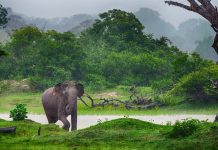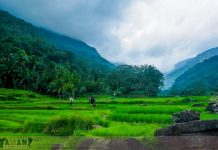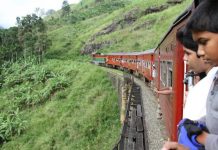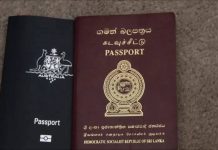The Ruhunu National Park or Yala as it is better known, is synonymous with the word ‘wildlife’ in Sri Lanka. The largest wildlife sanctuary in the island, Yala covers 126, 786 hectares and is situated 305 km south east of Colombo near the coast. The country here is dry zone scrub jungle with patches of dusty glades and starkly different to the green verdure of the wet zone. This is the home of the elephant, once widespread over the whole island, but now mostly hemmed in by ever increasing human presence, to pockets in the low lying plains. Trained trackers accompany groups who view herds of elephant, bear, elk and the occasional leopard in their natural habitat. A number of interesting archaeological sites are also located within the park.
Yala is a national park and strict nature reserve that is divided into 5 blocks. The most visited block is better known as Yala West, and covers about 14 hectares. Elephants are the most visible inhabitants of the park, but it is also home to as much as 130 different species of birds, sambhur and spotted deer, sloth bears, crocodiles, monkeys, jackals, wild boar and porcupines. If you’re really lucky, you might glimpse one of the small population of leopards here – perhaps the best way to do so is by making friends with the research team based just outside the park, which is tracking and studying the behaviour the leopards. The terrain here consists of rocky outcrops, lagoons and a mixture of scrub and plains.The park is open from 6am – 6pm everyday, and the best times to visit are at dawm or dusk. The best time to make a visit to this remote area of the island is between October and December. You can buy tickets at the park office near the entrance, and hire a jeep or car, and your compulsory tracker there.
There are also a number of archaeological sites within the park that indicate the remains of a once thriving society. Sithulpahuwa is a monastic settlement that once housed over 12,000 inhabitants. There is also the Magul Maha Vihara built in the 1st century BC and a Chetiya (shrine) built in the 2nd century BC in the area. The Tissawewa is a man made tank with abundant bird life, that dates back to the 3rd century BC. There is a large restored Dagoba next to the tank, which was built by King Kavantissa and a statue of his wife Vihara Maha Devi next to it. Ask around, and the locals will also point you in the direction of the secluded baths used by Vihara Maha Devi and her ladies. The Sandagiri Vihara and the Yatala Vihara also date to about 2300 years ago, and are worth a visit, as even the ruins indicate the vision of past kings, and the sheer genius of their engineers.
The Kirinda beach is 10kms south of the town of Tissa, and offers probably the most spectacular scuba diving in the country. Arthur C. Clarke’s team explored the Great and Little Basses reefs when diving for wrecks, and the account is told of in his ‘The Treasure of the Reef’.
There are many places to stay in and around Yala (there are seven bungalows in the park, that you can book through the park office) and Tissa. These vary in comfort and price, but are all clean and the people here are very hospitable. There are regular buses to Tissa (which is the closest town to the reserve), but be aware that this journey can take up to seven hours. A car journey will cost more, but also get you there is a considerably shorter space of time.




























